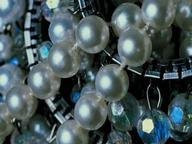Quiz Answer Key and Fun Facts
1. One of the oldest known uses of jewelry is believed to have been found in Blombos Cave in South Africa. What material was used by the Mesolithic Age people who lived there to make their jewelry?
2. The bauble in the picture could be mistakenly identified as a modern day charm bracelet. Instead, it was made using the earliest known metal at the beginning of the Age of Metals. Can you identify the metal?
3. In ancient Mesopotamia, these beautiful gold trinkets were not used as earrings, as one might assume. For which of the following purposes would they be used?
4. The crown in the picture is believed to have belonged to an Egyptian princess from the 18th Dynasty. What is another name for a crown?
5. This gorgeous bracelet/armlet dates from the Achaemenid period in ancient Persia. With which mythological creature is it decorated?
6. This lovely pendant, known as the "Minoan Bee Pendant", was found at the archaeological site called Malia. On what island was the pendant found?
7. Who wouldn't be proud to wear this beautiful earring, which was crafted by the ancient Mycenaeans. Which of the following choices below would be the most correct classification of this earring today?
8. These spectacular hinge bracelets are decorated with gemstones and an ancient technique that used vitreous enamel and inlays of cut gemstones. What is the process called?
9. This handsome brooch was typically used for keeping garments closed. Considering the designs on the brooch, which culture do you think used this type of jewelry?
10. This ancient Roman necklace measures approximately thirty-seven inches in length. It is a choker.
Source: Author
ponycargirl
This quiz was reviewed by FunTrivia editor
kyleisalive before going online.
Any errors found in FunTrivia content are routinely corrected through our feedback system.


